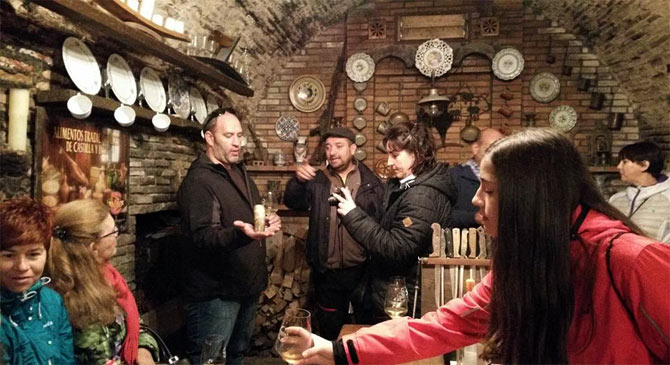Visit to the Monastery of Santa María de Valbuena, headquarters of The Ages of Man, where history, sacred art and spirituality come together in a unique environment in the Ribera del Duero.
The Monastery of Santa María de Valbuena, founded in 1143 by Doña Estefanía de Armengol, stands as one of the best preserved medieval Cistercian complexes in Europe. Located on the banks of the Duero River, in the town of San Bernardo, this majestic twelfth-century building has witnessed centuries of history and tradition in the region.
Upon entering the monastery, visitors are captivated by its impressive Cistercian architecture. The cloister, with its elegant austerity, reveals the essence of monastic life and the spiritual influence that the monastery has exerted on the area. The magnitude of its imposing church and the series of thirteenth-century mural paintings preserved in the funerary chapel of the foundress, silently narrate the history of faith and culture that have flourished within its walls.
Since 2002, the monastery has housed the permanent headquarters of the Las Edades del Hombre Foundation, becoming a center for the management of cultural heritage. This transformation has given the place a new dimension, merging its rich history with the preservation and dissemination of sacred art.
The connection between the monastery and the viticulture of the Ribera del Duero is deep and ancestral. Cistercian monks, known for their agricultural work, played a crucial role in the development and preservation of winemaking techniques in the region. This legacy has contributed significantly to Ribera del Duero's current reputation as one of Spain's most prestigious wine regions.
Today, the Monastery of Santa María de Valbuena is not only a historical monument, but also a living symbol of the confluence between spirituality, art and winemaking tradition. Its imposing presence in the landscape of the Ribera del Duero continues to inspire visitors and scholars, offering a unique experience that transcends time and connects the past with the present in tangible and exciting ways.
desc opinión ing


Take a look at the following experiences

Aster Magonia offers a visit to the underground wineries of Medina del Campo, exploring its viticultural heritage and the significance of wine in the 16th and 17th centuries.